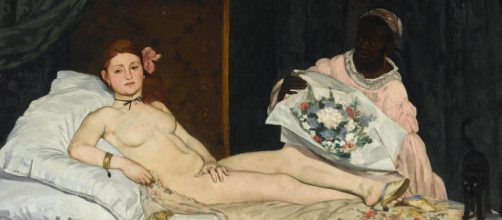This is baffling news. Beginning Sept. 24, 2023, the Metropolitan Museum of Art will debut an exhibit called "Manet/Degas," linking two painters that don't belong in the same sentence, let alone in the same show.
In a statement," Met director Max Hollein said, "Manet and Degas produced some of the most provocative and admired images in Western art." But you could say that about a lot of modern masters.
Granted, Edouard Manet and Edgar Degas were contemporaries who painted in a realist style at a time when their peers were going gaga over Impressionism.
I'll give them that.
The Odd Couple
But many artists have used the same style but are otherwise unrelated. The pictures of Manet and Degas are not just unalike; they're at odds with one another.
Consider Manet's "Olympia," a reclining female nude, which is making its first appearance in the U.S. When it was introduced at the Paris Salon in 1865, it shocked the French, and it wasn't the nudity- a time-worn cliché by then.
The figure of Olympia does more than recline without clothes. She peers at the viewer. By observing those observing her, she interfered with their viewing pleasure as if to ask, "What are you looking at?"
Obviously, checking out a picture of a nude woman watching you do it is not the same as freely gazing upon old-timey passive nudes.
Olympia made Parisians self-conscious.
That Manet's painting upended the French cognoscenti in 1865 is not surprising. After all, up to that time, women were no better than objects of affection in art, doing nothing more than expose themselves.
How sexist was French society at the time? Check out 19th-century painter Gustave Courbet's thinking; "An artist who marries isn't an artist, he's a sort of jealous proprietor...who says, 'my wife' as he says, 'my stick or my umbrella.'"
Of course, it's no wonder that Courbet would talk like that. His painting "Origin of the World" pictures a woman's sex organ as a stand-alone object – completely faceless.
The back story
This is a good place to bring Degas into the conversation and explain why the twin billing is so baffling.
His favorite subject was women in their baths, often seen from the back.
Stripped of their individuality, the women in Degas' paintings are mere motifs, mindless elements of color and shape - Bathshebas without stories.
So, I ask, why does the Met pair Degas with a painter who focused on a woman's state of mind, not only in "Olympia" but also in "Luncheon on the Grass"?
Even Degas' work highlighted in the Met show – "Family Portrait (The Bellelli Family)," which puts female faces in plain view – illustrates women's lesser role at the time.
What you see is a woman standing idly by with her two young daughters as her husband huddles over his desk, clearly busy. You can't help thinking of Courbet's view of a wife as "my stick or my umbrella" – mindless elements of color and shape.
But wait, Manet may fit in with Degas's disdain for women after all. When speaking to the writer George Moore about his brother's wife, the painter Berthe Morisot, he said, 'My sister-in-law wouldn't have been noticed without me."


